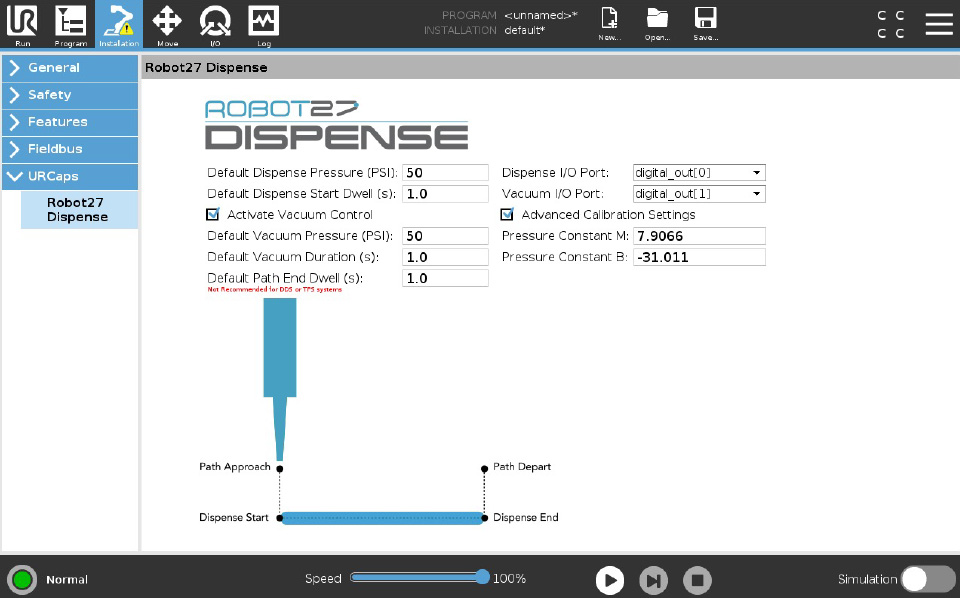URCAP Configuration overview
Robot27 recommends creating a simple dispensing path of about one inch in length to hone in the dispense settings before programming the entire application. There are several settings that can be adjusted in the URCap to control the dispensing process including:
- Dispense Start Dwell – The time period between when the PCU starts dispensing material and when the robot begins to move.
- Dispense Pressure – The pressure at which the material is dispensed. Higher pressures push more material through the end effector for thicker beads or dots of material.
When dispensing low viscosity fluids which may drip after dispensing has been completed, vacuum retraction may be turned on by checking the Activate Vacuum Control checkbox in the default settings. Checking this box allows access to the following additional settings:
- Dispense Path End Dwell – The time period for which vacuum retraction is active after dispensing is completed.
- Vacuum Pressure – The pressure at which material is retracted back into the tip to prevent drips.
- Vacuum Duration – The time period that vacuum retraction is active.
The default settings can be adjusted in Polyscope by clicking on the Installation tab, then on the URCaps dropdown menu, then on Robot27 Dispense. Dispense Pressure and Dispense Start Dwell can both be adjusted within each dispense command without modifying the defaults.
There are several other factors that affect the dispensing process including:
- Dispense Tip Size – Larger tips allow higher material flow rates creating larger beads or dots.
- Dispense Tip Height – Having the tip too far from the workpiece can lead to uneven or inaccurate beads. Having the tip too close to the workpiece can cause the bead to spread out in an undesired way.
- Robot Speed – Higher robot speeds can lead to decreased bead size and, in some cases, inconsistent bead results.
Adjusting some or all of the above may be required to fine-tune your dispensing application.
